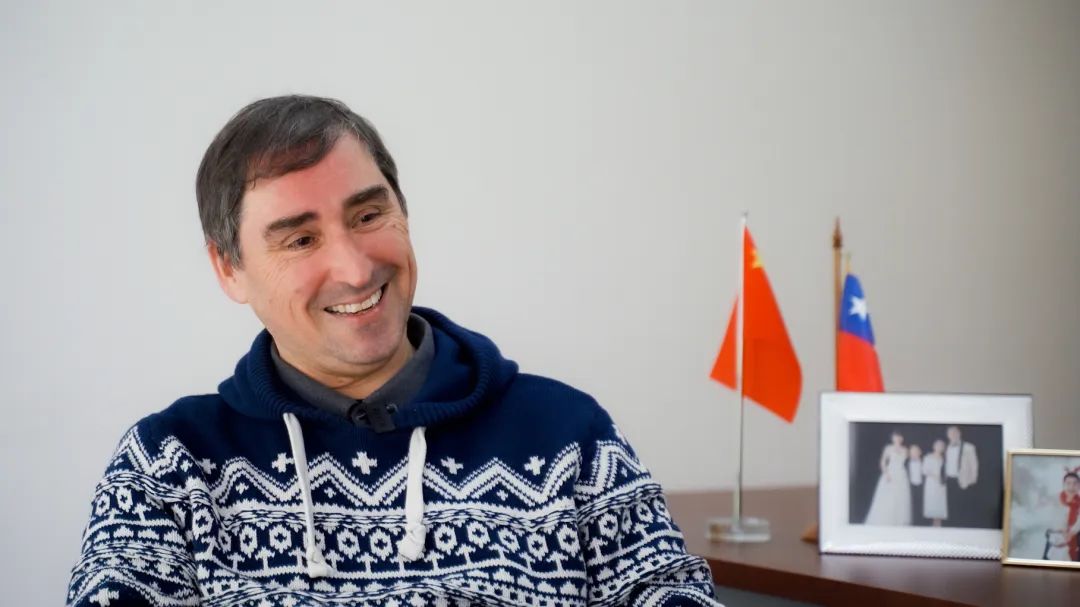Meet the CEO who brought Chilean salmon to China
Writer: Chen Xiaochun | Editor: Vincent Lin | From: Shenzhen Daily | Updated: 2022-05-09
A+ A- Print
TWENTY years ago, basically no one in China knew about Chilean salmon, only Norwegian salmon. Erwin Ivan Campos Avello, currently CEO of Asia for Camanchaca, was one of the first to come to China and bring this product to the table of Chinese households.
Campos majored in biochemistry and also obtained a master’s degree in food engineering. After graduation he joined Camanchaca, a seafood producer with a history of some 60 years, a company for which he works to date.

Erwin Ivan Campos Avello
In 2002, Campos came to China for the first time, since he was in charge of selling fishmeal at that time and China was a huge market.
“China is the number one buyer in the world. At that time, Chile and Peru were the world’s largest producers of fishmeal. At that time, we had a lot of volume to sell, and we didn’t have representation in China. So that was my mission to come here,” Campos said in an exclusive interview with Shenzhen Daily.
When he came to China, he visited Shenzhen, Guangzhou and Fuzhou. “These were the big buyers — the ones who farmed shrimp and eel were the ones who bought fishmeal,” Campos said.
In the following years, Campos came to China annually — four times a year, and stayed for a month each time.
With the passing of time, Campos helped the company consolidate the Chinese fishmeal market and they no longer needed to do any more promotion for the product. In early 2013, the company sent him to China to set up an office in Shenzhen because they wanted to open the market for products for human consumption, mainly salmon.
“You know that Chile is the second-largest producer of salmon in the world after Norway. In those days, everybody [in China] said Norwegian salmon. So, we had a long-term task ahead of us,” Campos said.
He chose Shenzhen to set up the office. Why Shenzhen? He reasoned: “First, because it was more modern. Second, because it had a nice climate. And third, because it borders Hong Kong where I already had a fairly strong market for our seafood product.”
For Campos, Shenzhen was his central operation hub. “From the very first time, it was my center of operations,” Campos said, adding that another important reason was that he met his wife in the city.
He took the risk of opening the Chinese market, came and has stayed put.
To boost salmon sales in China, in late 2013, Campos, who works for Camanchaca, initiated a joint venture with four other salmon companies including Australis, Blumar, Yadran and Marine Farm. The five companies in Chilean salmon farming created the New World Currents for the Chinese market.
After many efforts, the consortium made many historic milestones. They shipped fresh salmon from Chile to China. They became the leaders in fresh salmon.
Apart from their own efforts, they enjoyed an advantage. According to the free trade agreement signed between China and Chile, their products enjoy zero tariff, which means that Chilean salmon is less expensive for Chinese consumers than Norwegian salmon.
“I think that today everyone knows that Chilean salmon is the same as Norwegian salmon. It is just a little far away. But that was the purpose of creating this joint venture,” Campos said contently.
In 2020, Camanchaca withdrew from New World Currents, and Campos continued to lead the company’s China operation, including the sales of salmon, abalones and mussels.
For Campos, the Guangdong-Hong Kong-Macao Greater Bay Area has a very promising future.
“When the Hong Kong-Zhuhai-Macao Bridge was built, our buyers in Hong Kong told us that it was perfect for them because the logistical problem was solved. The future of this area is very promising, at least, for our field. Our office is here. We have products that sell more here, and I think this will boost it even more,” he said.